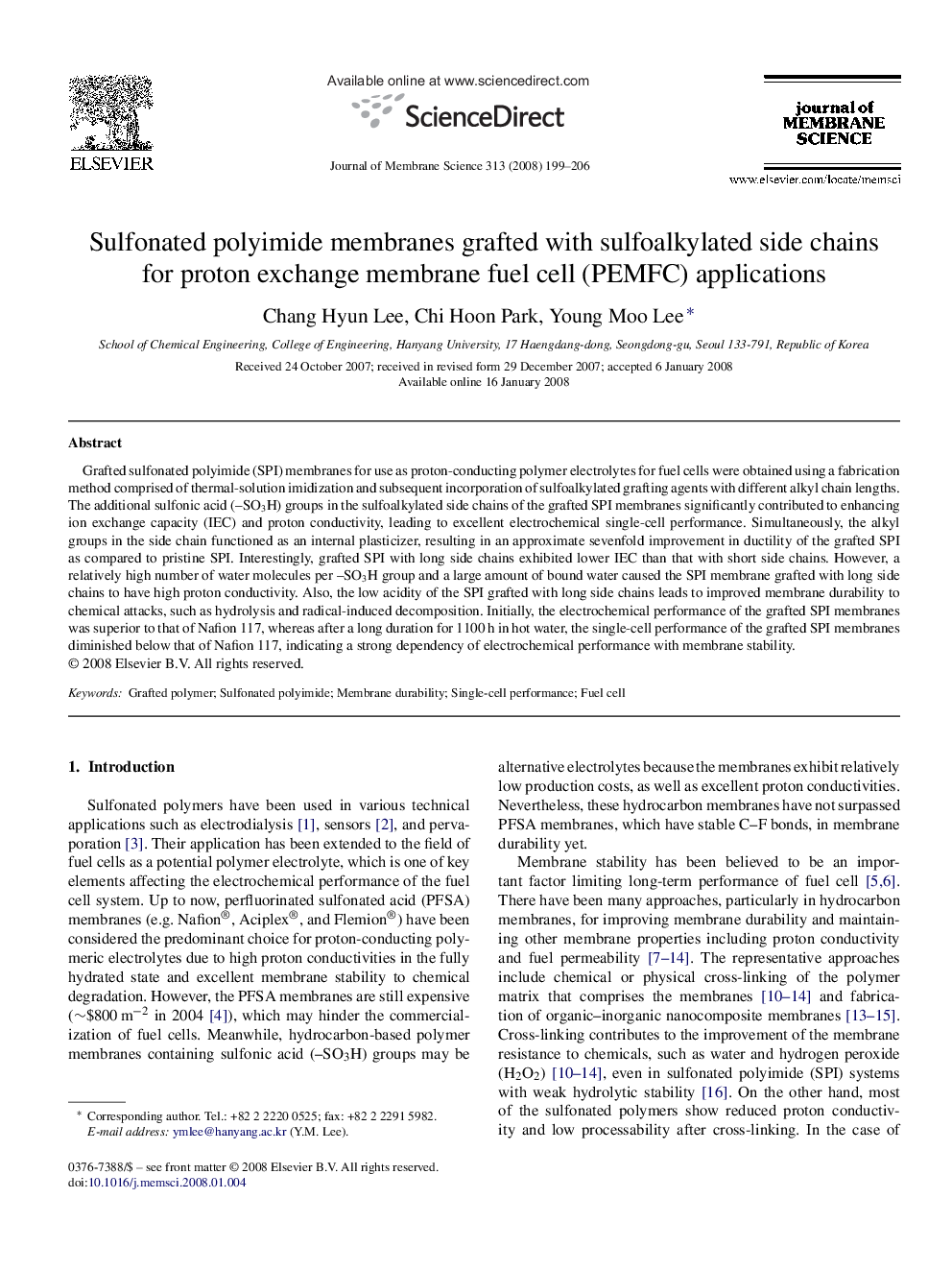| Article ID | Journal | Published Year | Pages | File Type |
|---|---|---|---|---|
| 638022 | Journal of Membrane Science | 2008 | 8 Pages |
Grafted sulfonated polyimide (SPI) membranes for use as proton-conducting polymer electrolytes for fuel cells were obtained using a fabrication method comprised of thermal-solution imidization and subsequent incorporation of sulfoalkylated grafting agents with different alkyl chain lengths. The additional sulfonic acid (–SO3H) groups in the sulfoalkylated side chains of the grafted SPI membranes significantly contributed to enhancing ion exchange capacity (IEC) and proton conductivity, leading to excellent electrochemical single-cell performance. Simultaneously, the alkyl groups in the side chain functioned as an internal plasticizer, resulting in an approximate sevenfold improvement in ductility of the grafted SPI as compared to pristine SPI. Interestingly, grafted SPI with long side chains exhibited lower IEC than that with short side chains. However, a relatively high number of water molecules per –SO3H group and a large amount of bound water caused the SPI membrane grafted with long side chains to have high proton conductivity. Also, the low acidity of the SPI grafted with long side chains leads to improved membrane durability to chemical attacks, such as hydrolysis and radical-induced decomposition. Initially, the electrochemical performance of the grafted SPI membranes was superior to that of Nafion 117, whereas after a long duration for 1100 h in hot water, the single-cell performance of the grafted SPI membranes diminished below that of Nafion 117, indicating a strong dependency of electrochemical performance with membrane stability.
